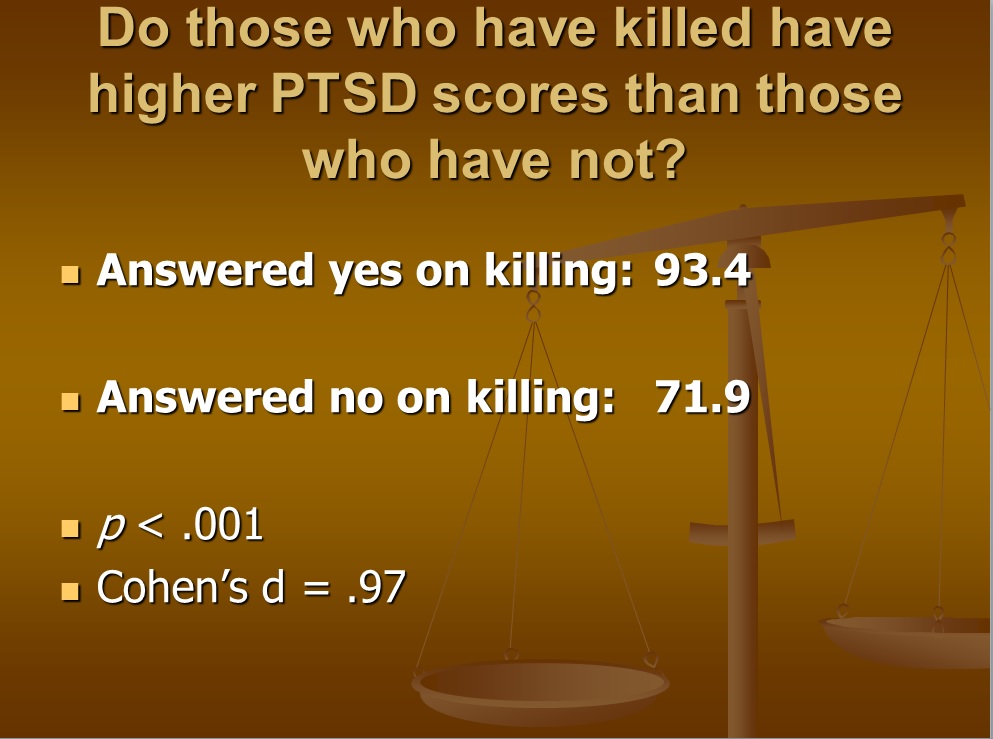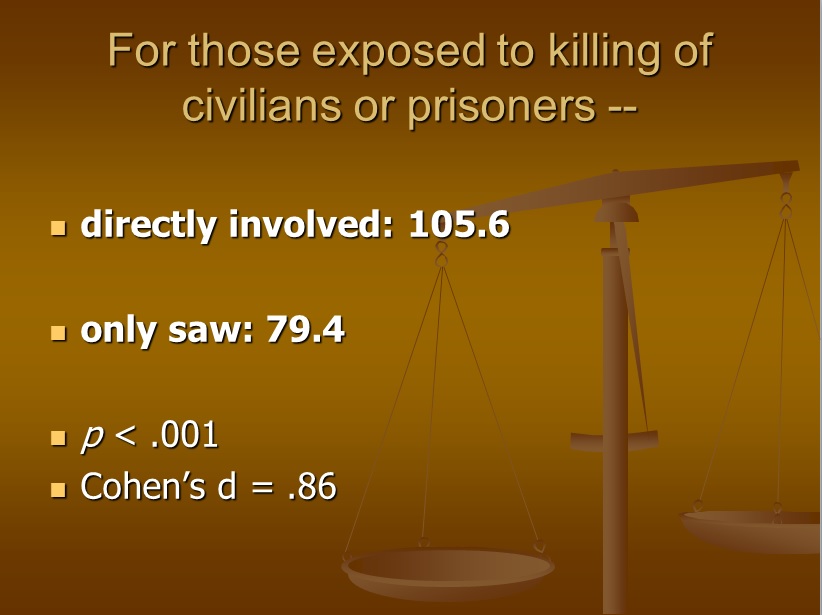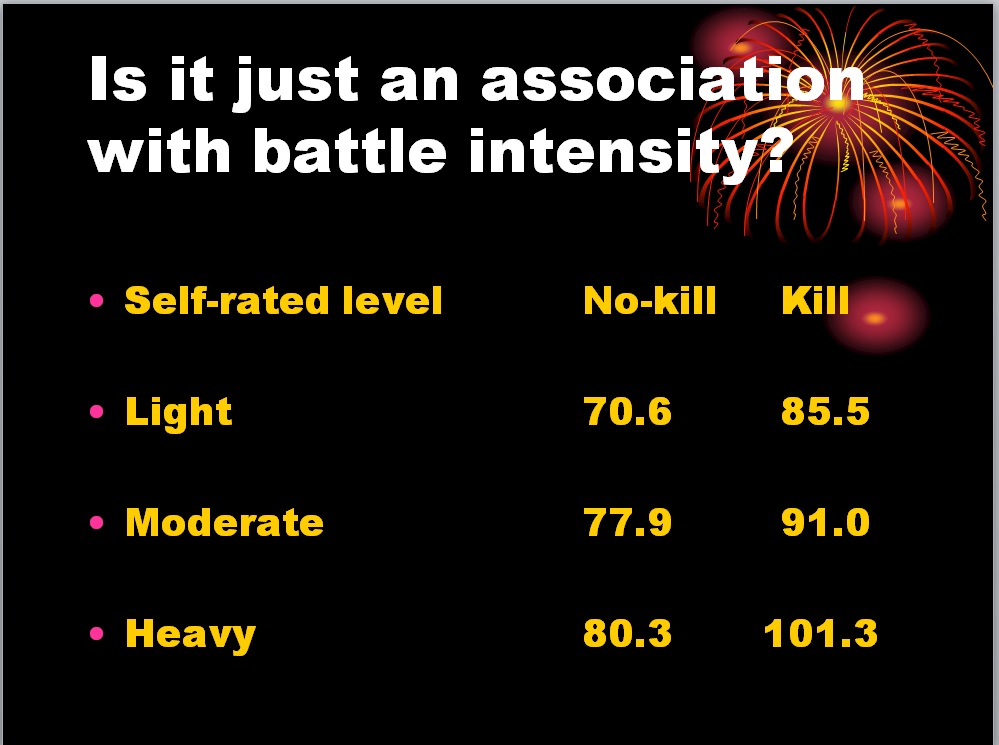The National Vietnam Veterans Readjustment Study (NVVRS) used a large stratified random sample of U.S. Vietnam-era veterans. Rachel M. MacNair, Ph.D., received the raw government data and did a secondary analysis of the 1,638 veterans who had gone to Vietnam.
The veterans were asked: “Did you kill or think that you killed anyone in Vietnam?” Answers were yes or no.

The difference was substantial The p-value means the difference wasn’t due to chance, and the Cohen’s d is almost 1, which means the size of the difference was huge.
Since anyone who didn’t kill might not have been subjected to any other form of trauma either, the next step was to analyze those questions in which veterans were asked if they were exposed to the killing of civilians or prisoners. They were asked if they were “directly involved” or “only saw” the event. Traumatic events are known to have been experienced.

The next consideration is whether answering yes on killing only meant that they had been in heavier combat, and it was the heavier combat that was responsible for the higher PTSD scores.
For the less statistically inclined, uninterested in how the multiple regression using battle intensity as a control variable came out, this chart is easier to understand:

While scores go up for each group as the battle intensity goes up, as would be expected, the people who reported they did not kill but were in heavy combat actually had lower scores than the people who reported they did kill but were in light combat. Killing was more traumatizing than the battle intensity by itself.
Dr. MacNair also did a discriminant function analysis, which allows a comparison of all the symptoms at once, thereby showing a pattern. Here’s the summary:

For exact figures, other analyses, and other details on this study, see:
MacNair, R. M. (2002). Perpetration-Induced Traumatic Stress: The psychological consequences of killing. Westport, CT: Praeger Publishers (pp. 173-181).
The original book on the NVVRS study is:
Kulka, R. A., Schlenger, W..E., Fairbank, J. A., Hough, R. L., Jordan, B. K., Marmar, C. R., & Weiss, D. S. (1990). Trauma and the Vietnam war generation: Report on the findings from the National Vietnam Veterans Readjustment Study. New York: Brunner/Mazel.
Other Pages:
Home Page: basic explanation, including list of symptoms.
Personal Stories from biographies and autobiographies throughout history, from a variety of kinds of violence.
Classic Literature shows the cross-cultural observations of keen observers of the human condition.
Moral Injury compares PITS with a related concept that’s become popular in recent years.
Coming soon: a new study, an analysis of U.S. prison data comparing those who committed homicide to those who committed other violence and to those whose crimes weren’t violent.